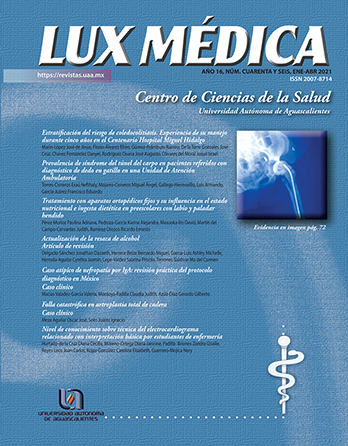Treatment with fixed orthopedic devices and its influence on nutritional status and dietary intake in preschool children with cleft lip and palate
DOI:
https://doi.org/10.33064/46lm20213060Keywords:
aparatos ortopédicos fijos, estado nutricio, dieta, ingesta nutricional, labioy paladar hendidoAbstract
Background: Cleft lip and palate (CLP) is one of the most common congenital disorders that affect facial structures and, consequently, interferes with the feeding process and an adequate nutritional status. Orthopedic treatment can play a role in nutritional and dietary disorders. Objective: We evaluated the nutritional status and dietary intake in preschool children with CLP treated with fixed orthopedic devices. Methods: This is a cross-sectional study, including 31 children (3 to 6 years) with CLP. Anthropometric measurements were taken following the criteria of the Z-score of the World Health Organization and the 24-hour dietary recall for the dietary evaluation (macro and micronutrients). Results: 19.4% of the children were underweight, and 25.8% were overweight or obese. A diet insufficient in specific nutrients was recorded, such as fiber, folic acid, iron, potassium, and phosphorus. Adherence to treatment with orthopedic devices was associated with a low protein intake and a higher lipid intake in those who follow correct adherence to treatment. Conclusions: Children with CLP may compromise their dietary requirements and, consequently, their nutritional status, material and functionality of the orthopedic devices must be considered to achieve adequate rehabilitation and normal growth.
Downloads
Metrics
Downloads
Published
How to Cite
Issue
Section
License
La revista Lux Médica está bajo una licencia de Creative Commons Reconocimiento-NoComercial-Compartir Igual 4.0 Internacional.















